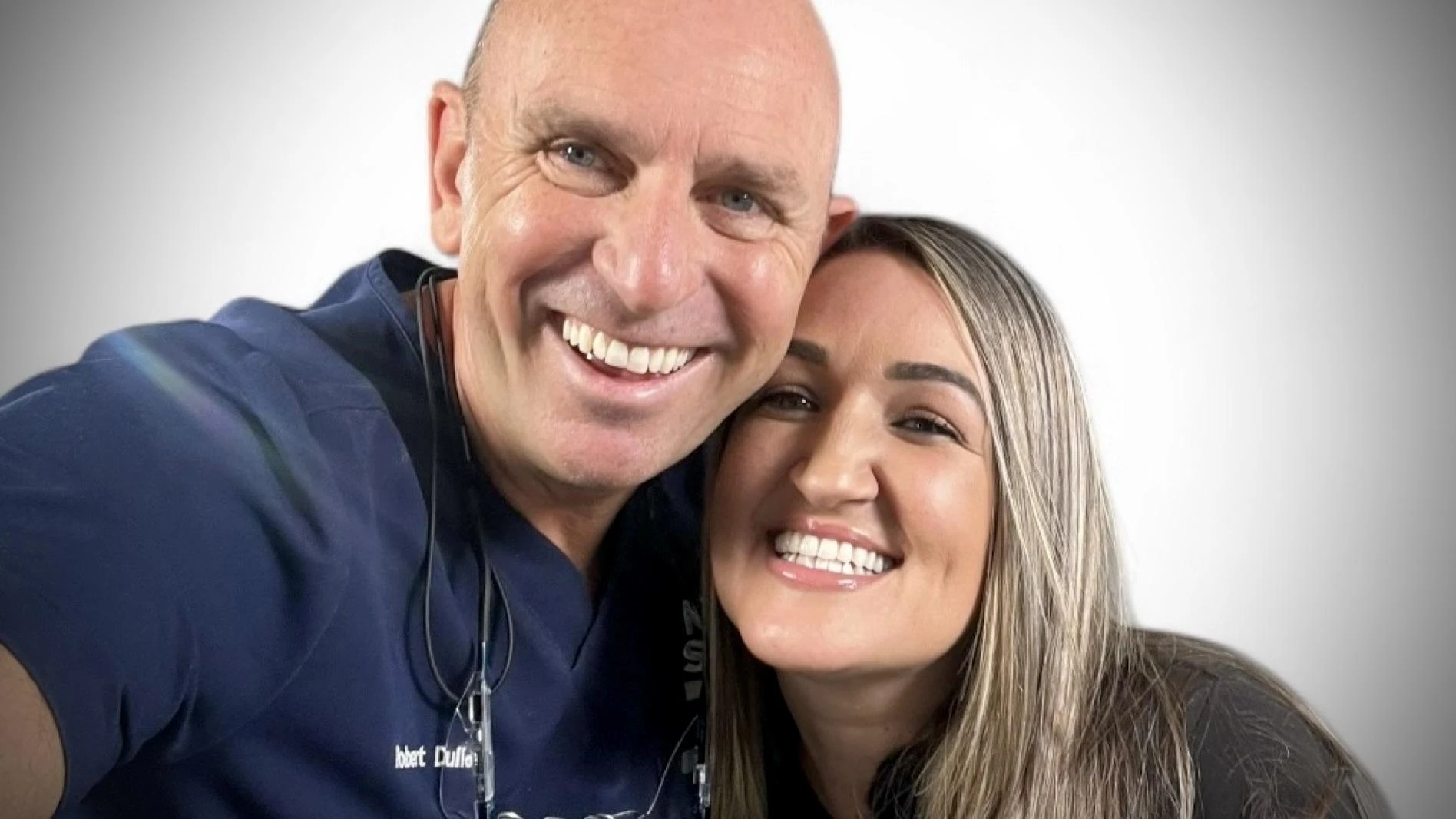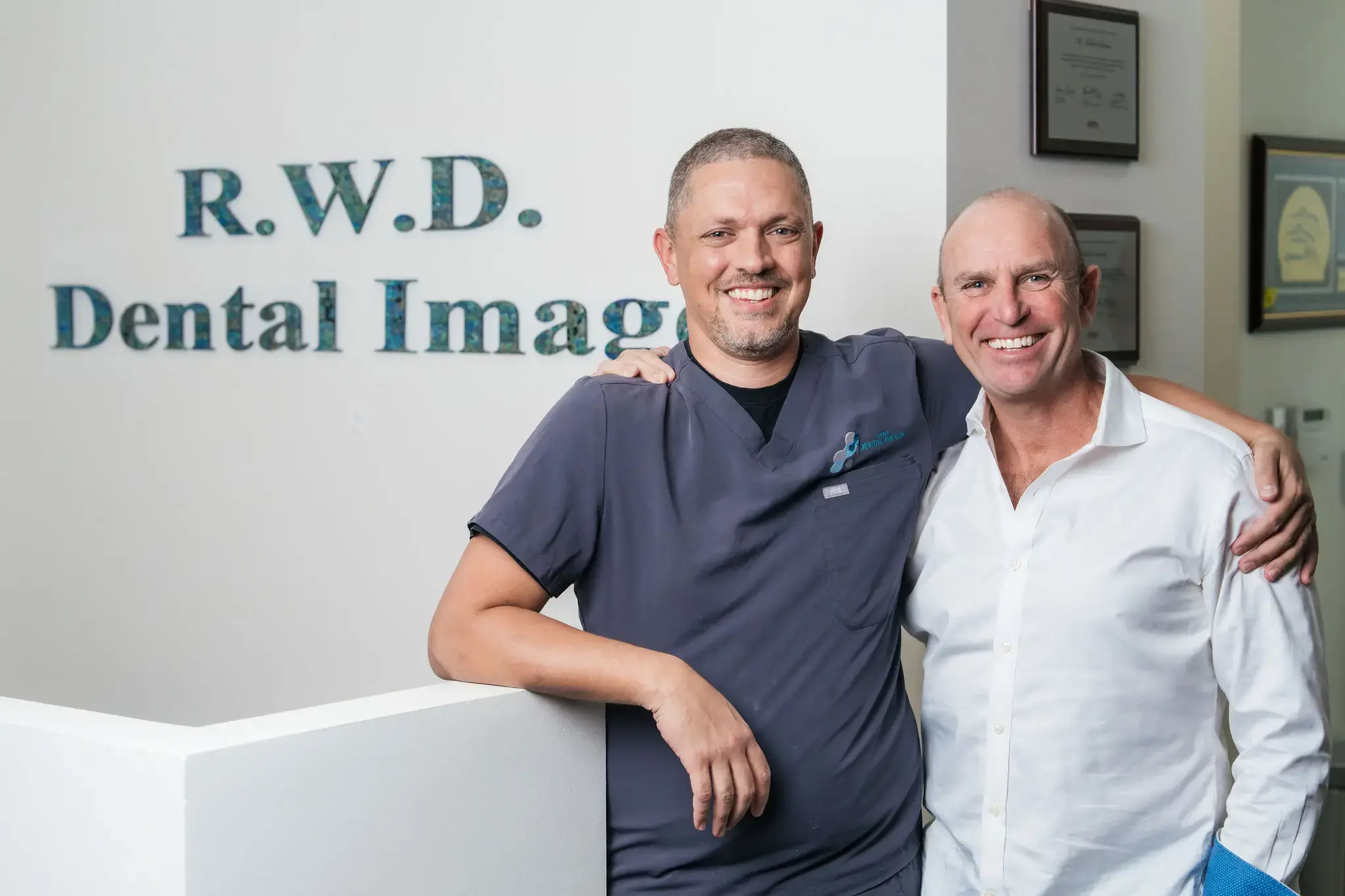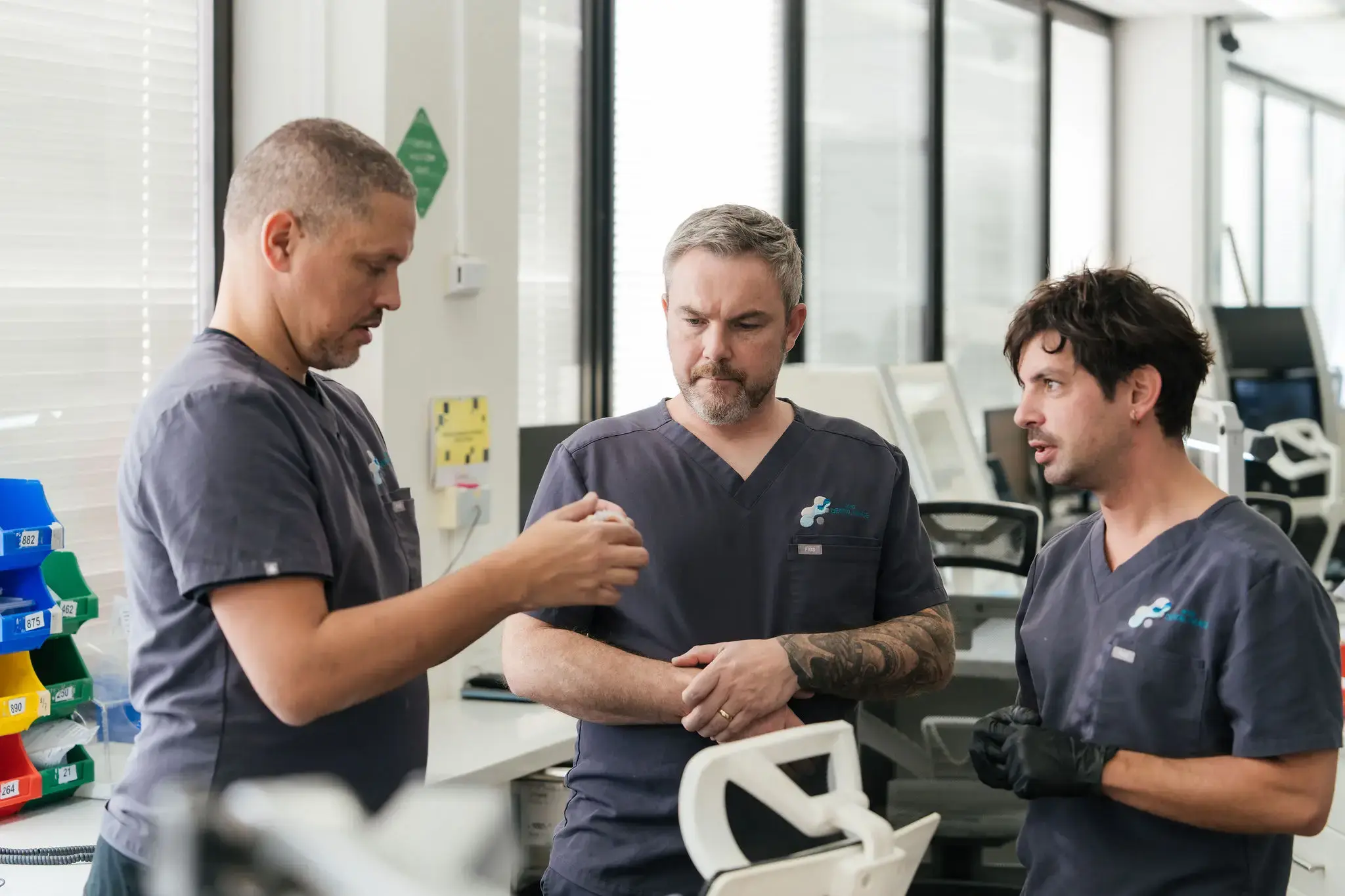Your patient has just undergone All-on-4® surgery. Four implants have been precisely placed, and multi-unit abutments have been secured. It’s now time for the implant impressions that will determine the success of the entire restoration. In the traditional workflow, you reach for impression trays, mixing tips, and polyvinyl siloxane, knowing the next 15 minutes will test both your patience and your patient’s tolerance.
The patient, already stressed from surgery, faces another uncomfortable procedure. The heavy impression tray, the gag-inducing material, and the inevitable need for a second impression when the first one tears or distorts. Meanwhile, accuracy depends on perfect technique, ideal conditions, and a bit of luck.
Now imagine a different reality. Ten seconds. That’s all it takes to capture the three-dimensional position of all four implants with precision that exceeds anything achievable through traditional methods. No discomfort. No gag reflex. No material setting time. No shipping distortion. No remake anxiety.
Key Takeaways:
-
10-Second Revolution
ICAM Photogrammetry captures implant positions with unprecedented speed (10-30 seconds), eliminating discomfort and gag reflexes associated with traditional impressions. -
Unmatched Accuracy
ICAM Photogrammetry achieves 20-35 micron precision, significantly outperforming traditional methods (200-600 microns) and intraoral scanning (70-125 microns) for passive fit. -
Enhanced Patient Experience
ICAM Photogrammetry is an extraoral, comfortable process, removing anxiety and discomfort for patients compared to traditional, lengthy impression procedures. -
Operator Independent
ICAM Photogrammetry's automated excellence and simple learning curve provide consistent, accurate results regardless of operator skill level, simplifying workflow.
This Isn’t Science Fiction. This is ICAM Photogrammetry
ICAM photogrammetry is revolutionising implant impressions across Australia through RWD Dental Image’s mobile service.

But the revolution extends far beyond speed. The precision achieved through ICAM photogrammetry is redefining what’s possible in implant dentistry, delivering accuracy that transforms both patient experience and clinical outcomes.
The Accuracy Revolution: When Microns Matter
In implant dentistry, the margin for error is measured in microns. For full-arch restorations, passive fit requires precision within 100-150 microns, roughly the width of a human hair. Traditional impression methods, despite decades of refinement, consistently fail to meet this demanding standard.

Understanding the Precision Hierarchy:
Traditional Analog Implant Impressions: 200-600 Microns Variance
- Material distortion during setting and removal
- Shipping and handling deformation
- Stone model expansion and contraction
- Manual articulator transfer errors
- User technique dependency and variation
Intraoral Scanning (IOS): 70-125 Microns Variance
- Stitching errors in large edentulous spans
- Moisture and debris interference
- Scan strategy and operator skill dependency
- Software processing limitations
- Reflective surface challenges with metal abutments
ICAM Photogrammetry: 20-35 Microns Precision
- Mathematical triangulation from multiple camera angles
- Calibrated titanium scan bodies for reference accuracy
- Extraoral capture eliminates environmental interference
- Advanced algorithms processing 60,800 calculations per scan
- Operator-independent consistent results
The Clinical Impact of Precision:
This accuracy hierarchy isn’t academic; it translates directly into clinical outcomes and patient experience:
200+ Micron Inaccuracy (Traditional) Results:
- Framework rocking and instability
- Screw loosening and mechanical complications
- Tissue inflammation and bone remodelling
- Patient discomfort and function compromises
- Frequent adjustment appointments and remakes
20-35 Micron Precision (ICAM) Outcomes:
- Guaranteed passive fit on all implants
- Optimal load distribution and implant longevity
- Healthy tissue response and stability
- Immediate function and patient satisfaction
- Predictable long-term success
Patient Experience Transformation: Comfort Meets Efficiency
The patient experience difference between traditional impressions and ICAM photogrammetry is transformative, particularly for individuals who have already endured the stress of surgical implant placement.
Traditional Impression Challenges:
Physical Discomfort:
- Heavy impression trays create jaw fatigue
- Bulky materials triggering gag reflexes
- An extended mouth opening causes muscle strain
- Material overflow and airway restriction concerns
Psychological Stress:
- Anxiety about gagging or choking
- Fear of impression failure requiring repetition
- Uncertainty about material setting times
- Claustrophobic sensations from mouth coverage
Time and Complexity:
- 15-30 minutes of continuous discomfort
- Multiple attempts are often required for quality results
- Additional appointments for impression retakes
- Delayed treatment timelines are affecting patient expectations
The ICAM Patient Experience:
Rob emphasises the dramatic difference: “The patient doesn’t actually feel anything. The patient’s experience is therefore much better. It’s faster, it’s more accurate. And the data that we’re getting in the laboratory is immediate.”
Extraoral Capture Benefits:
- No intraoral instruments or materials
- No gag reflex activation or airway concerns
- Patient relaxation and comfort throughout the procedure
- Clear communication is possible during capture
Rapid Completion:
- 10-30 second capture time eliminates endurance challenges
- Single attempt success rate approaching 100%
- Immediate verification of data quality
- Same-day progression to restoration fabrication
Psychological Advantages:
- Reduced anxiety through procedure simplicity
- Enhanced confidence in treatment technology
- Positive reinforcement of the treatment decision
- Improved perception of practice capabilities

Technical Superiority: The Science Behind ICAM Excellence
The remarkable precision and consistency of ICAM photogrammetry stem from sophisticated mathematical and engineering principles that represent a quantum leap beyond traditional implant impression methods.
Photogrammetry Principles:
ICAM technology utilises terrestrial photogrammetry, employing the same mathematical principles as those used in aerospace engineering and precision manufacturing. Four synchronised cameras capture multiple images of specially calibrated titanium scan bodies (ICamBodies) attached to implant abutments.
The system then applies triangulation algorithms to calculate precise three-dimensional coordinates. Each scan body position is determined through multiple reference points captured simultaneously, creating redundancy and cross-verification that eliminates single-point failure modes standard in traditional methods.
The 60,800 Calculation Advantage:
Rob highlights the computational intensity that sets ICAM apart: photogrammetry processes “60,800 calculations, compared to only 150-260 in other systems.” This isn’t merely impressive statistics; it’s the foundation of unprecedented accuracy.
Each calculation refines the spatial relationship between implants, building a mathematical model of implant positions with very low micron-level tolerances. The computational intensity enables:
Error Detection and Correction:
- Multiple calculation pathways verify each measurement
- Automatic identification and elimination of outlier data
- Real-time quality assessment and verification
- Immediate feedback on data completeness and accuracy
Environmental Compensation:
- Automatic adjustment for ambient lighting variations
- Compensation for minor patient or equipment movement
- Elimination of moisture and debris interference
- Consistent results across diverse clinical conditions
Calibration Precision:
- Individual calibration certificates for each scan body
- Traceability to international measurement standards
- Temperature and humidity compensation algorithms
- Long-term stability monitoring and verification
Workflow Integration: Seamless Technology Adoption
ICAM photogrammetry integration with existing dental workflows is remarkably straightforward, particularly through RWD’s mobile service model. The technology enhances rather than disrupts established procedures while delivering dramatically improved outcomes.
Pre-Surgical Integration:
Treatment Planning Enhancement:
- ICAM compatibility verification with selected implant systems
- Scan body ordering and sterilisation protocols
- Surgical timing coordination with mobile technician deployment
- Backup procedures and contingency planning
Patient Communication:
- Education about advanced impression technology benefits
- Expectation setting for rapid, comfortable procedures
- Explanation of same-day provisional possibilities
- Anxiety reduction through technology understanding
Surgical Day Workflow:
Setup and Preparation:
- Mobile technician arrives with calibrated equipment
- Integration with existing surgical protocols
- Minimal disruption to established procedures
- Professional oversight and quality assurance
Post-Implant Capture:
- Scan body placement and torque verification
- Multiple-angle capture for comprehensive data
- Real-time quality assessment and verification
- Immediate data transmission to the laboratory
Laboratory Integration:
- Instant CAD software data import
- Immediate design team activation
- Real-time collaboration and consultation
- Same-day provisional fabrication when indicated
Operator Independence: Consistent Excellence Across Skill Levels
One of ICAM’s most valuable characteristics is its operator independence. Unlike traditional impression techniques that require extensive training and experience to achieve consistent results, ICAM delivers identical accuracy regardless of who operates the device.
Rob explains this crucial advantage: “It doesn’t need a lot of training for somebody to use a photogrammetry camera. So the user friendliness is, and the learning curve is much easier than IOS scanning.”
Automated Excellence Features:
Guided Capture Protocols:
- Software provides real-time positioning guidance
- Automatic recognition of scan body placement
- Visual feedback confirming complete data capture
- Error prevention through procedural prompts
Quality Assurance Integration:
- Automatic assessment of data completeness
- Real-time verification of measurement accuracy
- Immediate notification of any capture issues
- Built-in redundancy and error correction
Training Simplification:
- Minimal technical knowledge requirements
- Intuitive operation procedures
- Consistent results from first use
- Reduced practice staff training burden
Consistency Benefits:
This operator independence provides significant advantages for dental practices:
Staff Flexibility:
- Multiple team members can operate the equipment
- Reduced dependency on specific trained individuals
- Consistent results regardless of operator experience
- Simplified scheduling and workflow management
Quality Reliability:
- Eliminated variation between different operators
- Predictable outcomes across all cases
- Reduced quality control requirements
- Enhanced patient confidence in procedures
Training Efficiency:
- Minimal initial training investment
- Rapid competency development
- Reduced ongoing education requirements
- Cost-effective skill development
Clinical Validation: Evidence-Based Excellence
The superiority of ICAM photogrammetry isn’t theoretical; it’s validated through extensive clinical research and real-world application. The evidence base supporting the accuracy of photogrammetry and its clinical outcomes continues to expand as its adoption increases worldwide.
Accuracy Studies:
Multiple independent research studies confirm ICAM’s precision advantages:
Trueness Comparisons:
- ICAM photogrammetry: 24-77 μm median trueness
- Conventional impressions: 28-150 μm median trueness
- Digital intraoral scanning: 45-120 μm median trueness
Precision Measurements:
- ICAM photogrammetry: 2-203 μm precision range
- Conventional impressions: 29-250 μm precision range
- Digital intraoral scanning: 35-180 μm precision range
Angular Accuracy:
- ICAM photogrammetry: <0.5° angular deviation
- Conventional impressions: >2° typical angular variance
- Digital intraoral scanning: 1-3° angular deviation range
Clinical Outcome Studies:
Real-world clinical application data demonstrates the impact of enhanced accuracy:
Success Rates:
- 99.6% prosthetic success rate with ICAM integration
- 98% reduction in framework remakes due to misfit
- 95% reduction in adjustment time at final delivery
- 90% improvement in patient satisfaction scores
Efficiency Improvements:
- 40% reduction in total treatment appointments
- 50% decrease in chair time requirements
- 30% reduction in laboratory material and labour costs
- Virtual elimination of emergency adjustment visits
Long-term Stability:
- Enhanced implant survival rates through optimal loading
- Reduced peri-implant tissue complications
- Improved patient-reported outcome measures
- Lower long-term maintenance requirements
Mobile ICAM Service: Precision Without Investment
RWD’s mobile ICAM service democratises access to this revolutionary technology, enabling any practice to achieve laboratory-grade precision without equipment investment or volume commitments.
Service Delivery Excellence:
Professional Technician Deployment:
- Certified ICAM specialists with extensive training
- Comprehensive equipment sets, including backup systems
- Real-time technical support and consultation
- Quality assurance oversight and verification
Comprehensive Service Scope:
- Pre-surgical planning and coordination
- Equipment setup and calibration verification
- Professional capture and quality assurance
- Immediate data transmission and laboratory integration
Geographic Accessibility:
- Australia-wide service capability
- Regional and rural practice support
- New Zealand and Pacific region coverage
- Flexible scheduling and emergency availability
Quality Guarantees:
- Passive fit guarantees on all restorations
- Professional liability coverage and support
- Rapid response to any technical issues
- Long-term relationship and outcome tracking
Cost-Benefit Analysis: Value Beyond Price
While mobile ICAM service involves per-case fees, the value delivered extends far beyond simple cost comparisons. The combination of enhanced accuracy, improved efficiency, and superior patient experience creates value that traditional methods cannot match.
Efficiency Value:
Time Savings:
- 30+ minutes saved per case through rapid capture
- Elimination of remake appointments and adjustments
- Reduced laboratory communication and coordination time
- Streamlined patient scheduling and management
Quality Improvements:
- Guaranteed passive fit, eliminating adjustment time
- Predictable outcomes reduce stress and uncertainty
- Enhanced patient satisfaction, improving practice reputation
- Professional development through advanced technology exposure
Risk Mitigation:
- Eliminated equipment investment and depreciation risks
- Professional technical support and troubleshooting
- Quality assurance backing and outcome guarantees
- Technology evolution, protection, and automatic upgrades
Revenue Enhancement:
- Increased case acceptance through technology leadership
- Premium service positioning and pricing opportunities
- Enhanced referral generation through superior outcomes
- Practice differentiation in competitive markets
The Future of Implant Impressions
ICAM photogrammetry represents more than incremental improvement; it’s a paradigm shift that’s redefining standards in implant dentistry.
“Photogrammetry and the data that backs it up are the most accurate way of capturing the coordinates of the dental implants and multi-units that have been placed.” ~ Rob Dulieu
Technology Evolution:
Emerging Capabilities:
- AI-assisted image analysis and processing
- Enhanced automation and workflow integration
- Expanded material compatibility and applications
- Integration with surgical navigation and planning systems
Workflow Enhancements:
- Real-time design collaboration and approval
- Automated quality assurance and verification
- Predictive analytics and outcome optimisation
- Patient communication and education integration
Market Transformation:
- Universal adoption of digital impression methods
- Elimination of traditional impression materials and techniques
- Standardisation of precision expectations and outcomes
- Global accessibility through mobile service models
Professional Development:
- Enhanced training and education opportunities
- Advanced case management and consultation capabilities
- International collaboration and knowledge sharing
- Continuous protocol improvement and innovation
Making the Transition: From Analog to Excellence
The transition from traditional impression methods to ICAM photogrammetry through RWD’s mobile service is straightforward and immediately beneficial. Practices report enhanced confidence, improved outcomes, and increased satisfaction from the first case.
Implementation Process:
Initial Consultation:
- Practice assessment and workflow evaluation
- Case selection and planning for the first ICAM experience
- Staff orientation and procedural overview
- Scheduling, coordination, and logistics planning
First Case Experience:
- Mobile technician introduction and setup
- Live demonstration and staff observation
- Professional guidance and quality assurance
- Immediate results and outcome verification
Ongoing Integration:
- Regular case review and protocol refinement
- Continuous education and skill development
- Advanced training and consultation opportunities
- Long-term partnership and strategic planning
Success Factors:
- Open communication and collaboration
- Commitment to protocol adherence and quality
- Patient education and expectation management
- Continuous improvement and a learning mindset
Conclusion: The 10-Second Revolution
The transformation from 15-minute analog impressions fraught with uncertainty to 10-second photogrammetric capture with guaranteed precision represents more than technological advancement. It embodies a fundamental shift toward patient-centred care, clinical excellence, and predictable outcomes.
Rob’s vision extends beyond individual case success: “The patient doesn’t actually feel anything. The patient’s experience is therefore much better. It’s faster, it’s more accurate. And the data that we’re getting in the laboratory is immediate.”
This patient-first philosophy, combined with unwavering commitment to precision, drives the mobile ICAM revolution.
The choice facing Australian dental practices is clear: continue with traditional methods that compromise accuracy and patient comfort, or embrace the precision revolution that’s transforming implant dentistry worldwide. Through RWD’s mobile ICAM service, this choice no longer requires massive capital investment or volume commitments.
The 10-Second Revolution Is Here. The Precision Is Proven
RWD’s Mobile Photogrammetry Service is available nationwide. The only question remaining is: are you ready to transform your implant impressions from analog uncertainty to digital excellence?
Every case matters. Every patient deserves precision. Every practice can access excellence.
The revolution begins with your next implant case.
Experience the 10-Second Revolution
Discover how ICAM photogrammetry can transform your implant impression workflow and improve your patient experience. Book a live demonstration at your practice and witness low-micron precision in action.
Transform your implant impressions in 10 seconds. Contact RWD Dental Image today.





